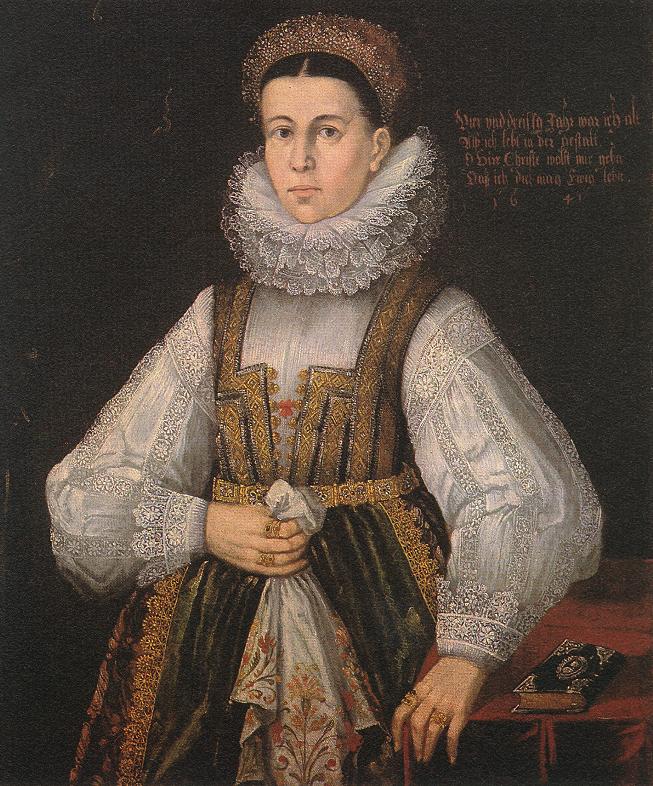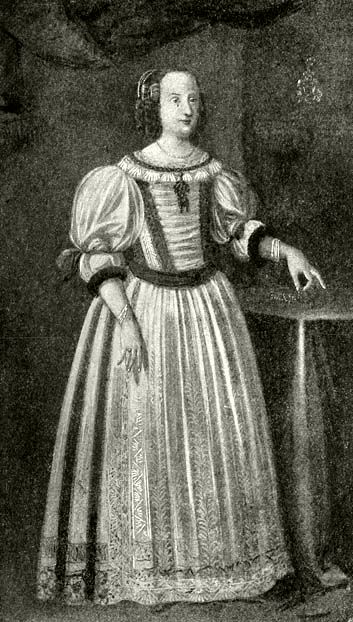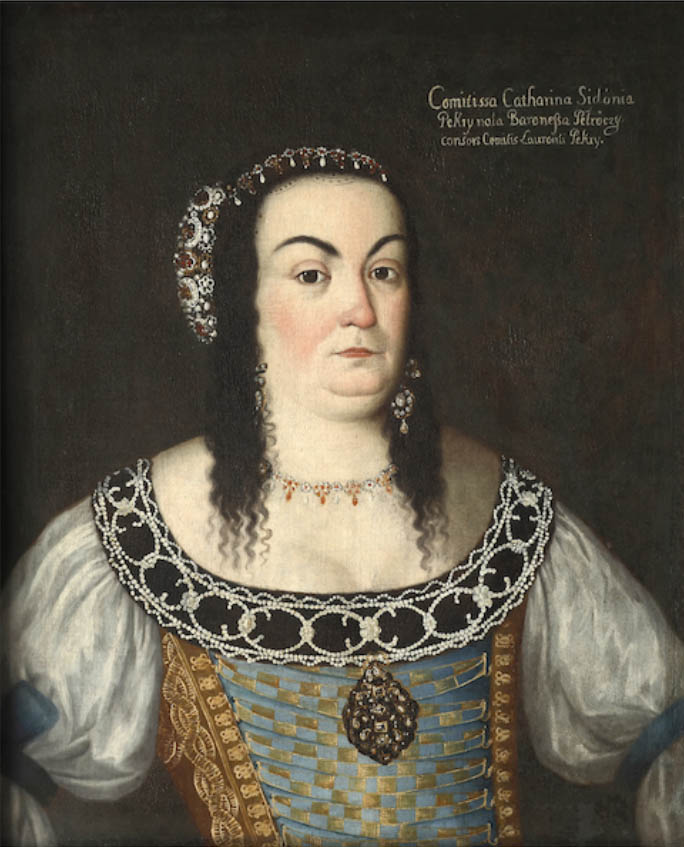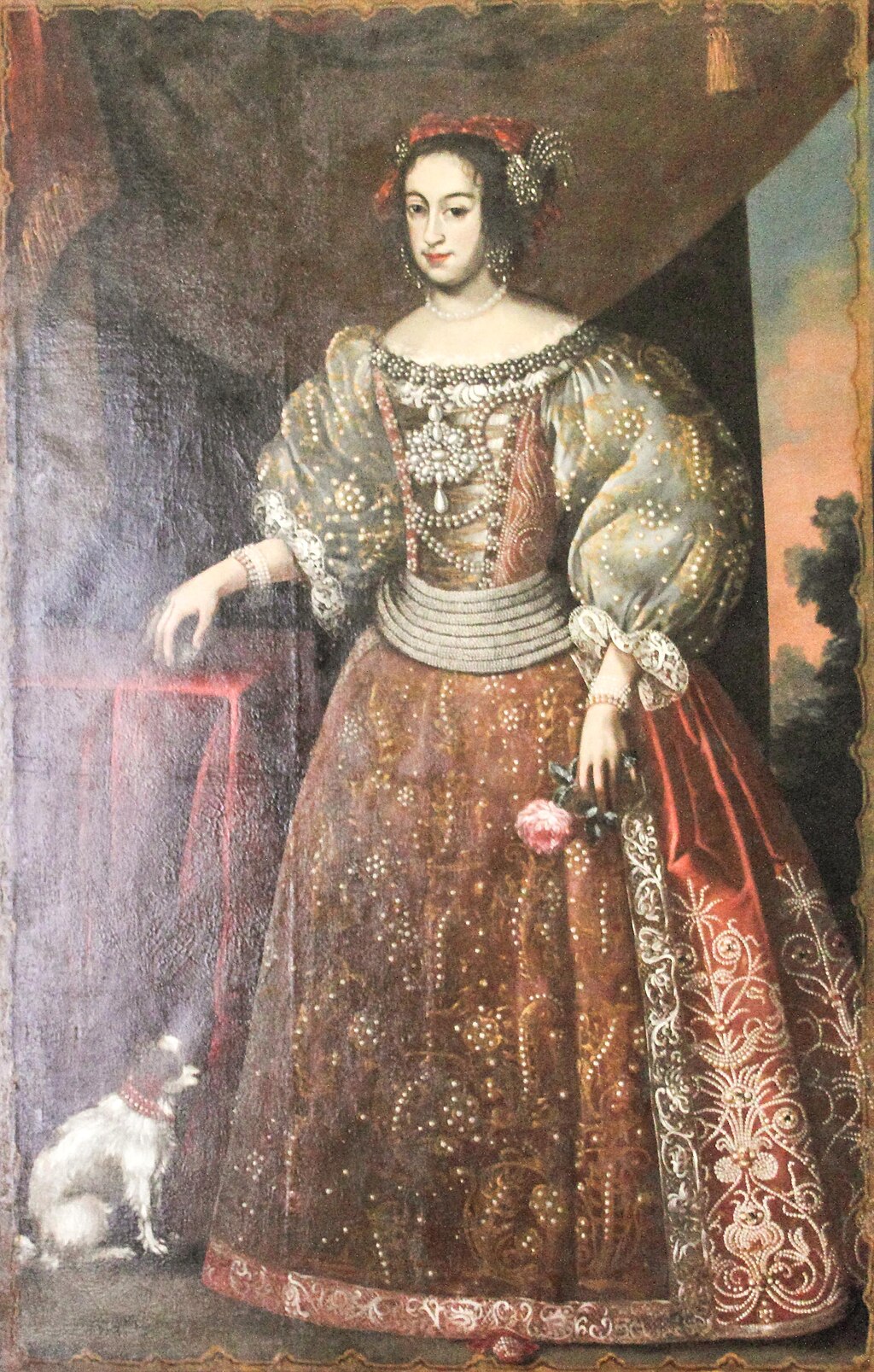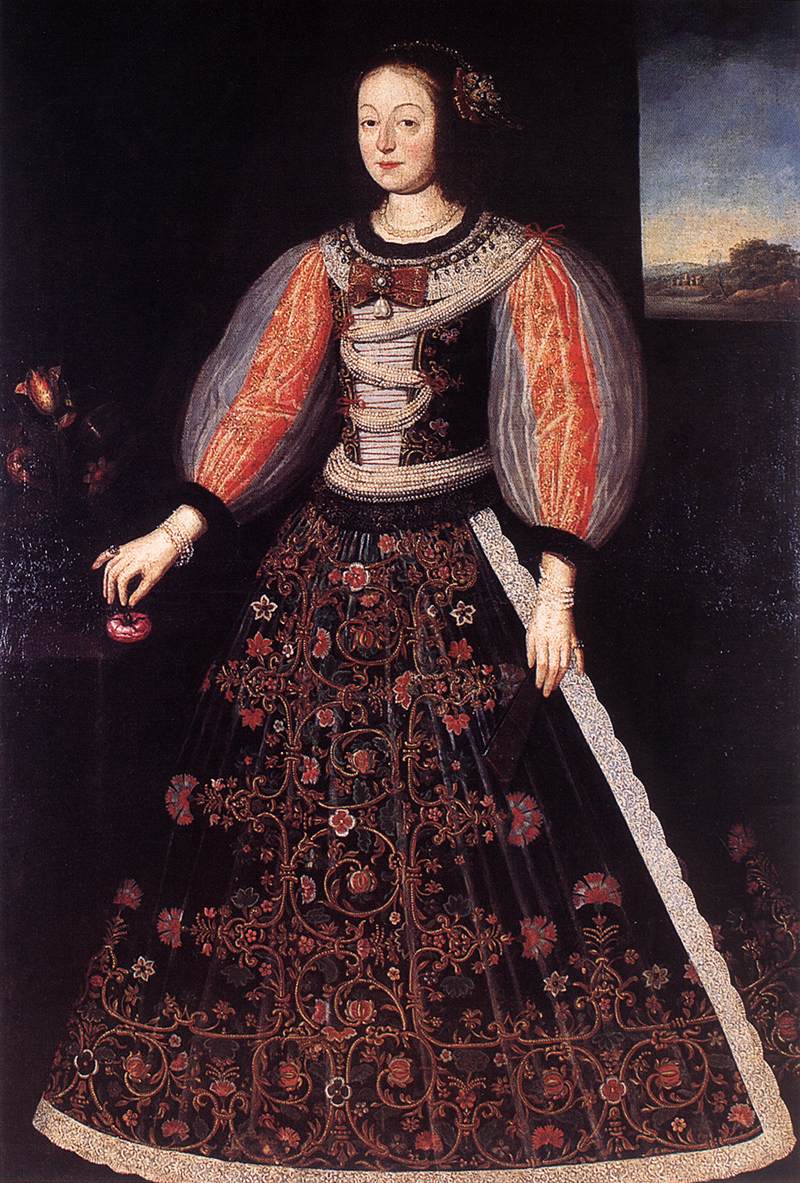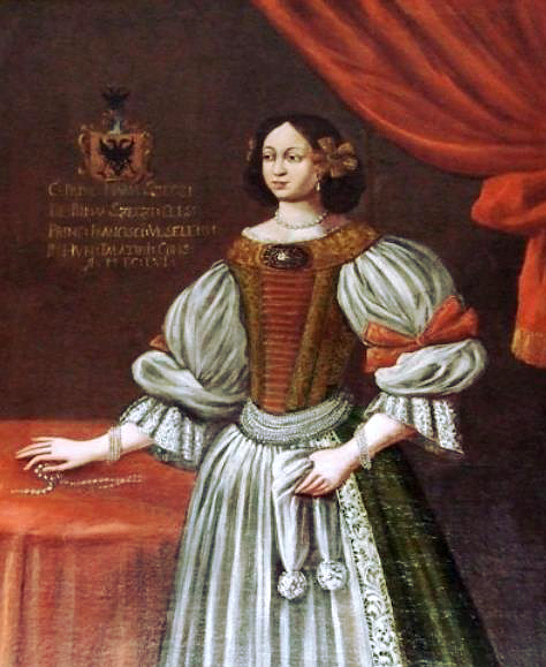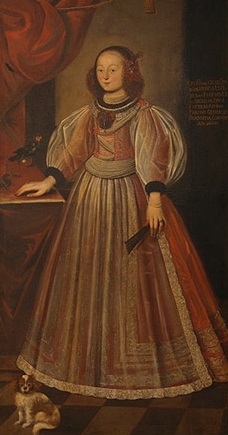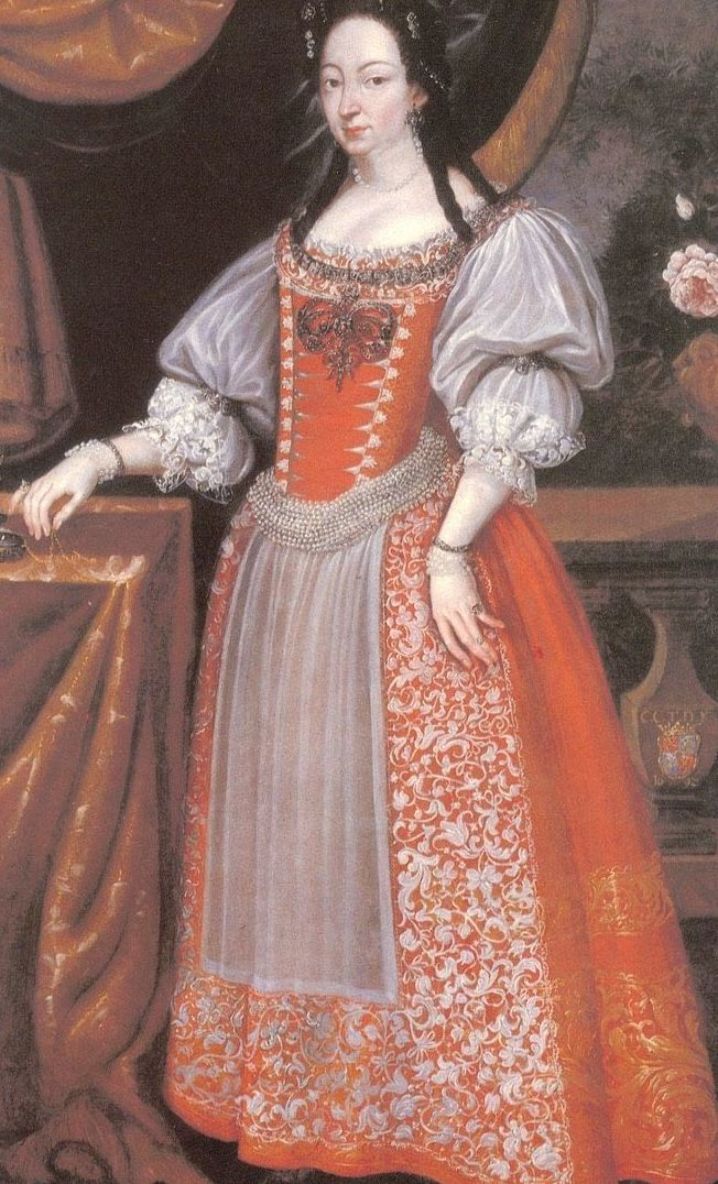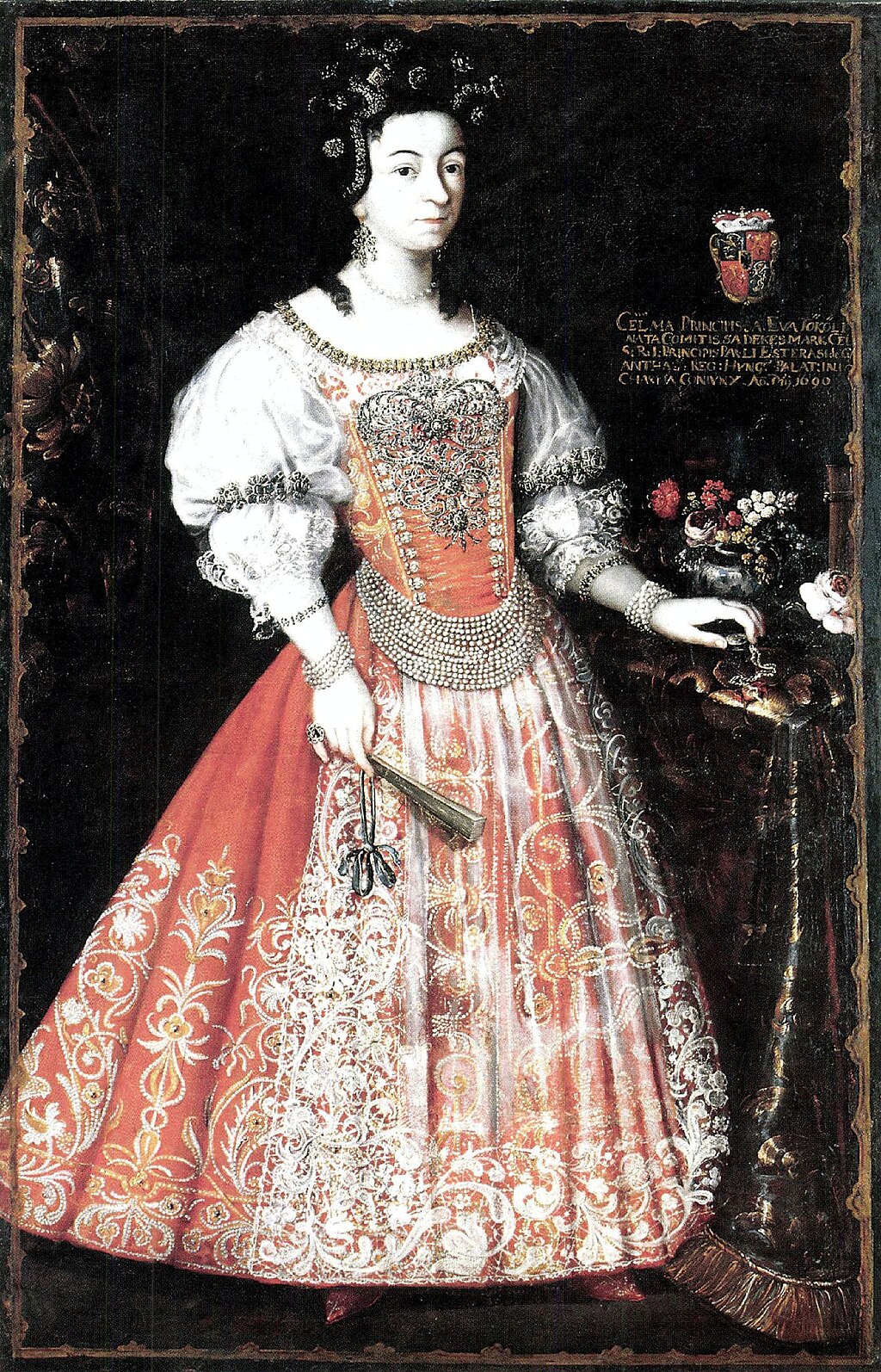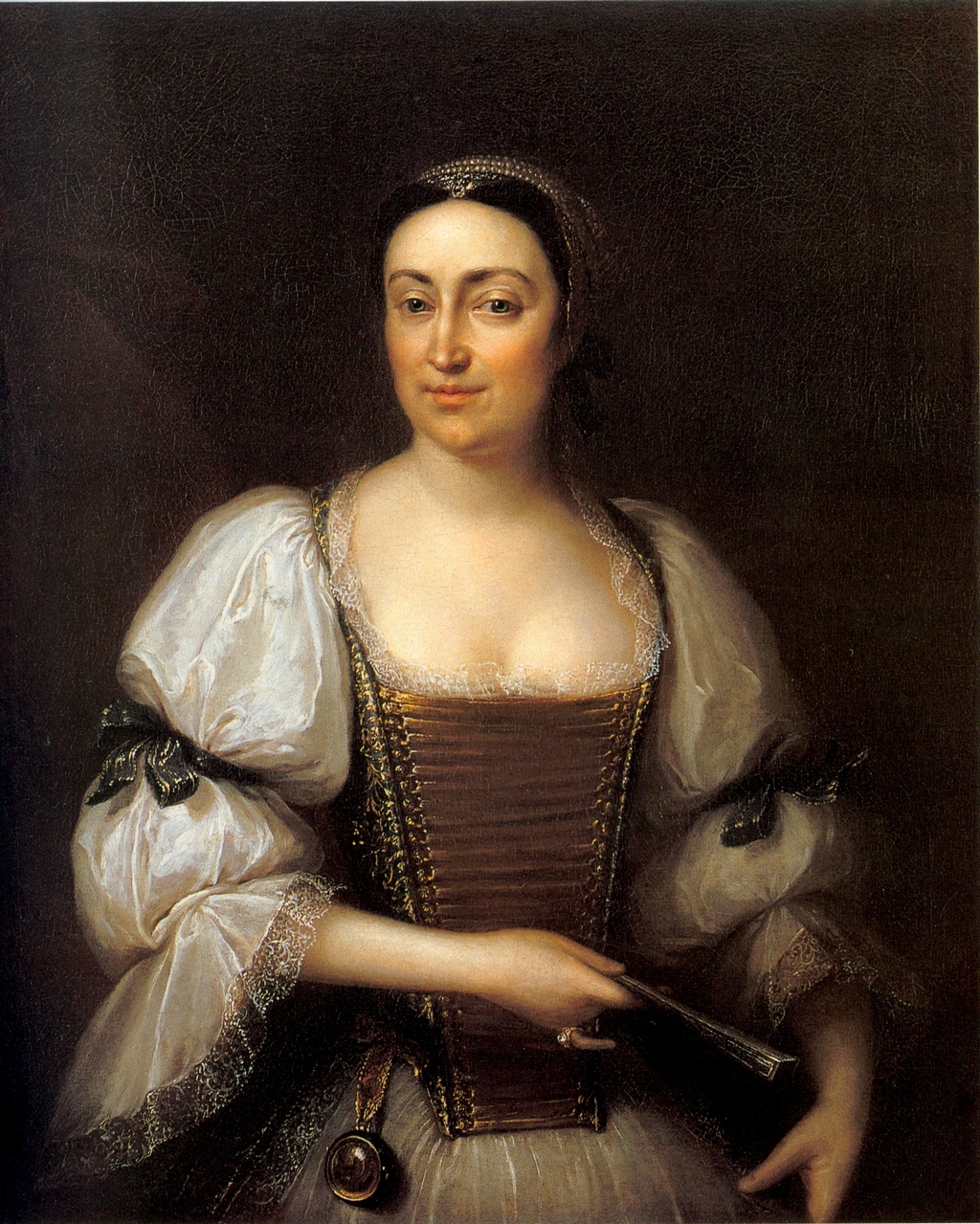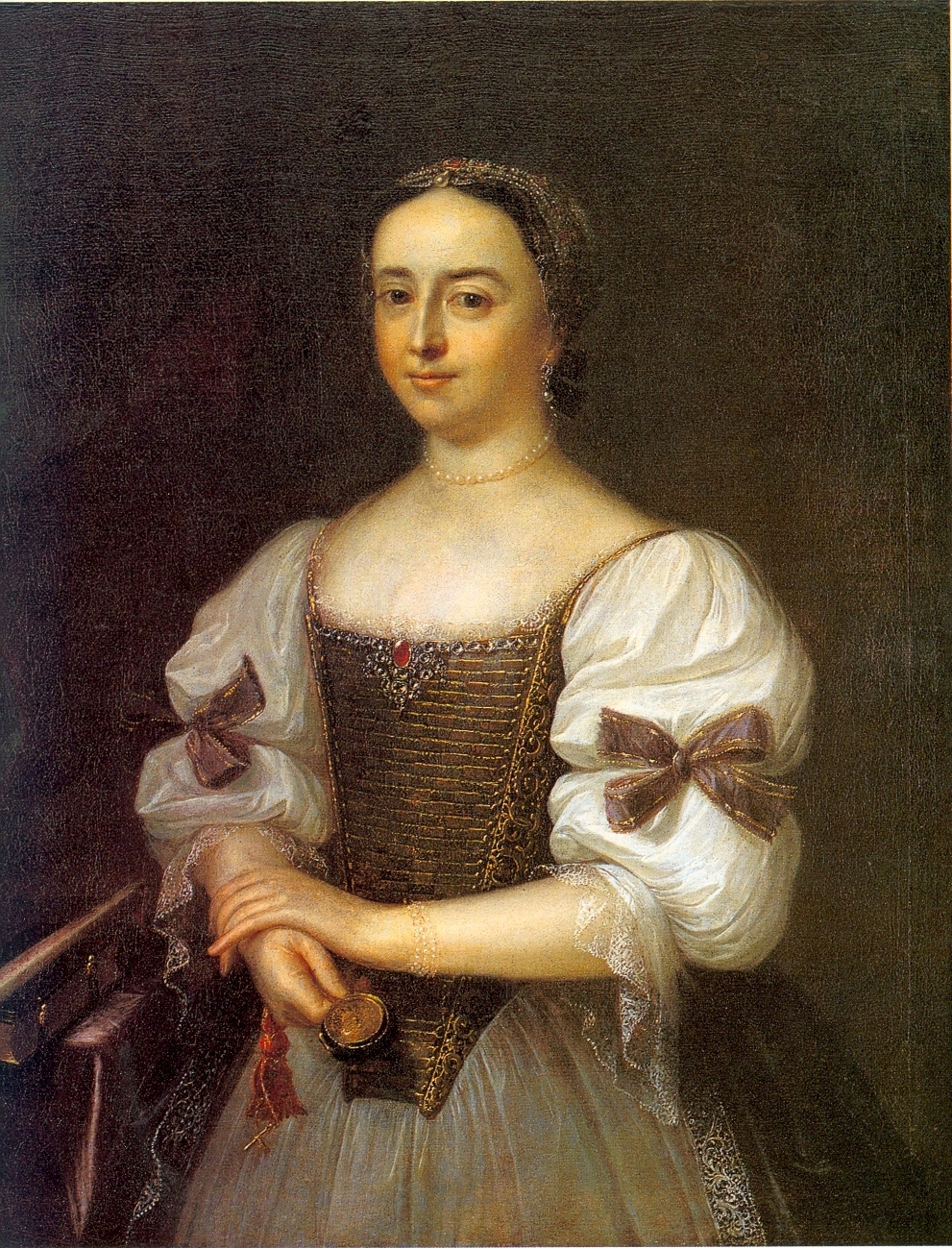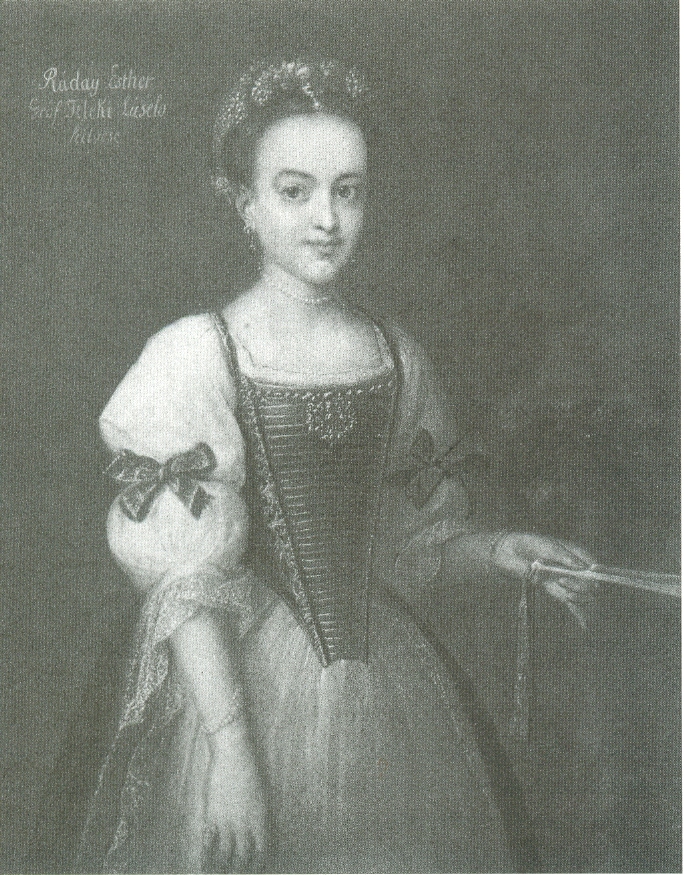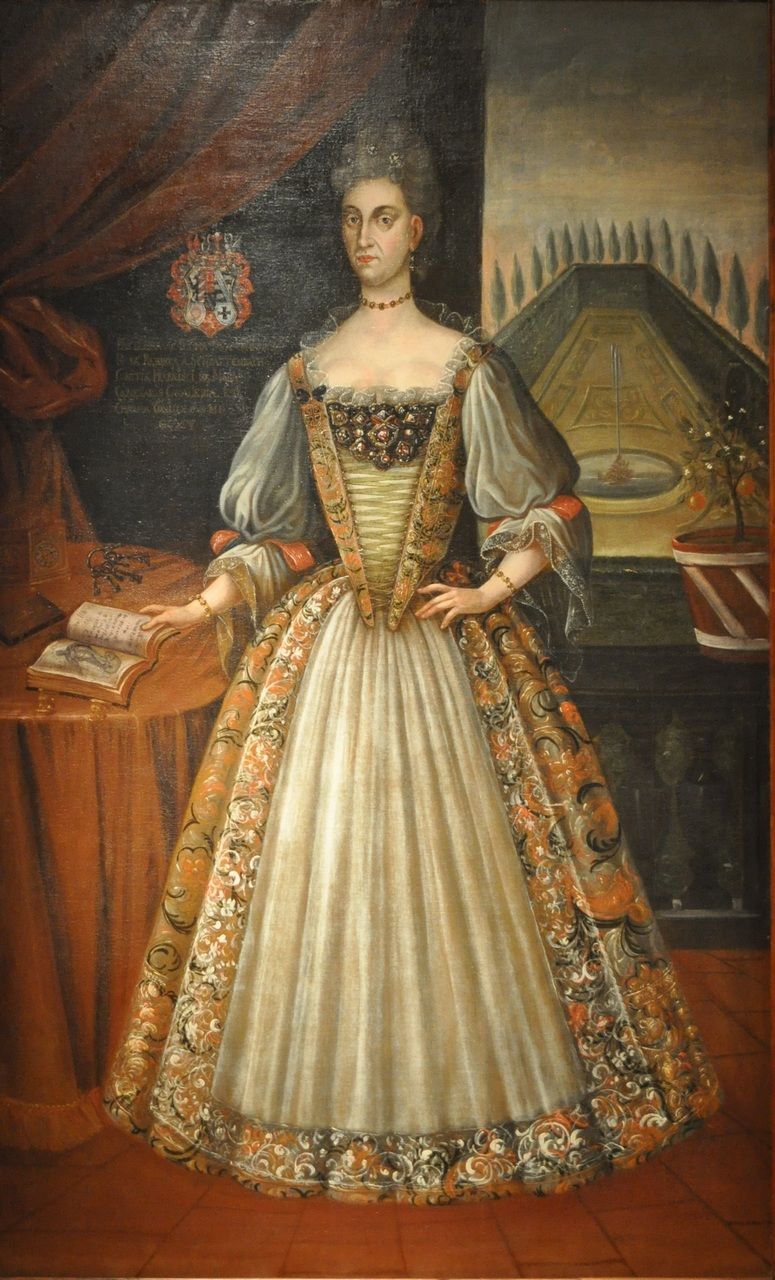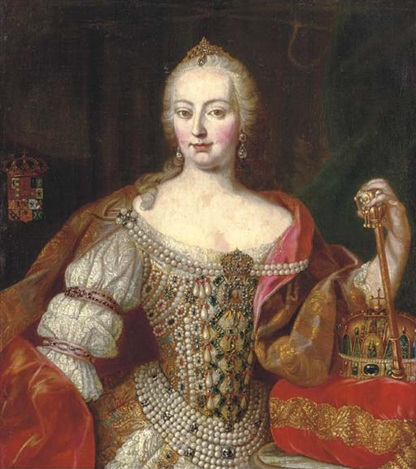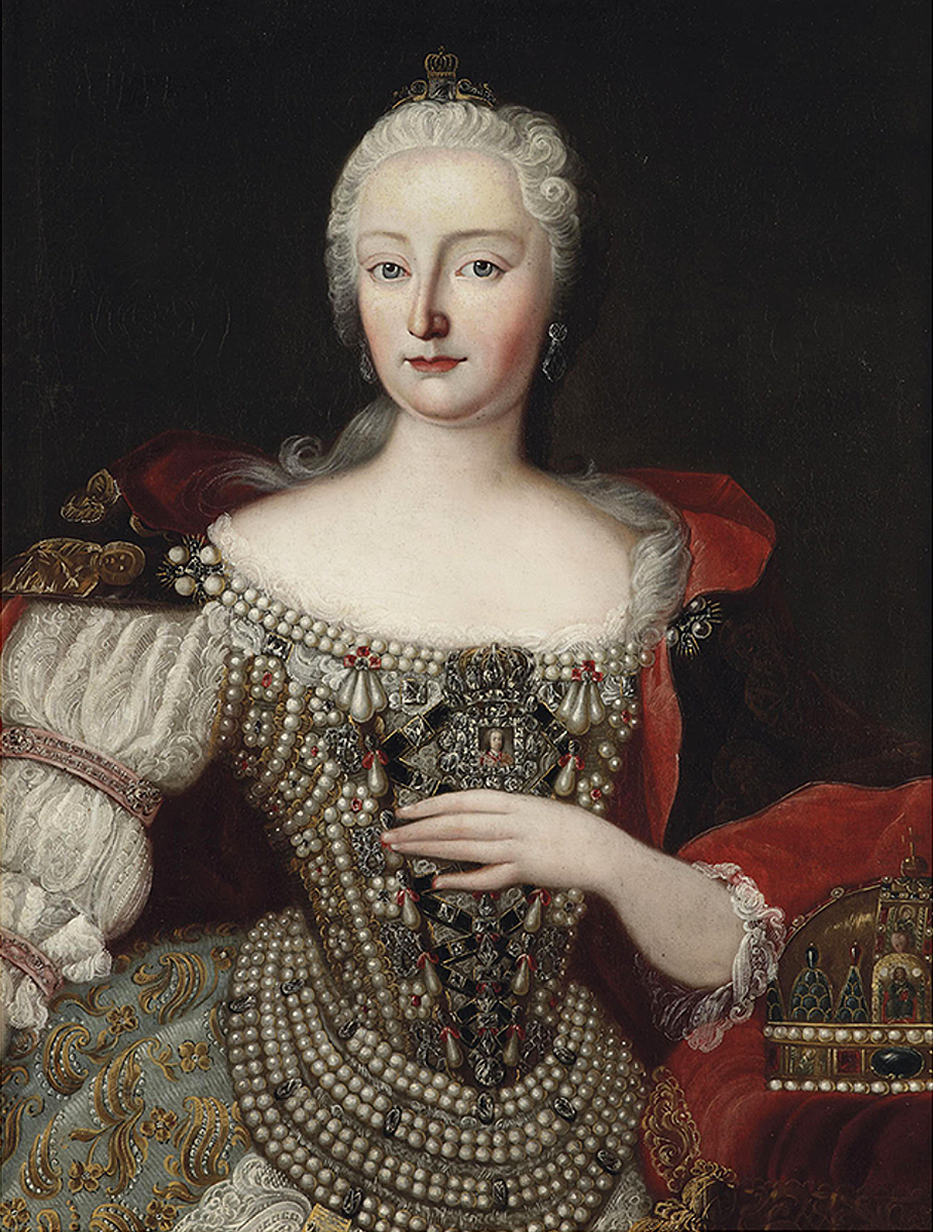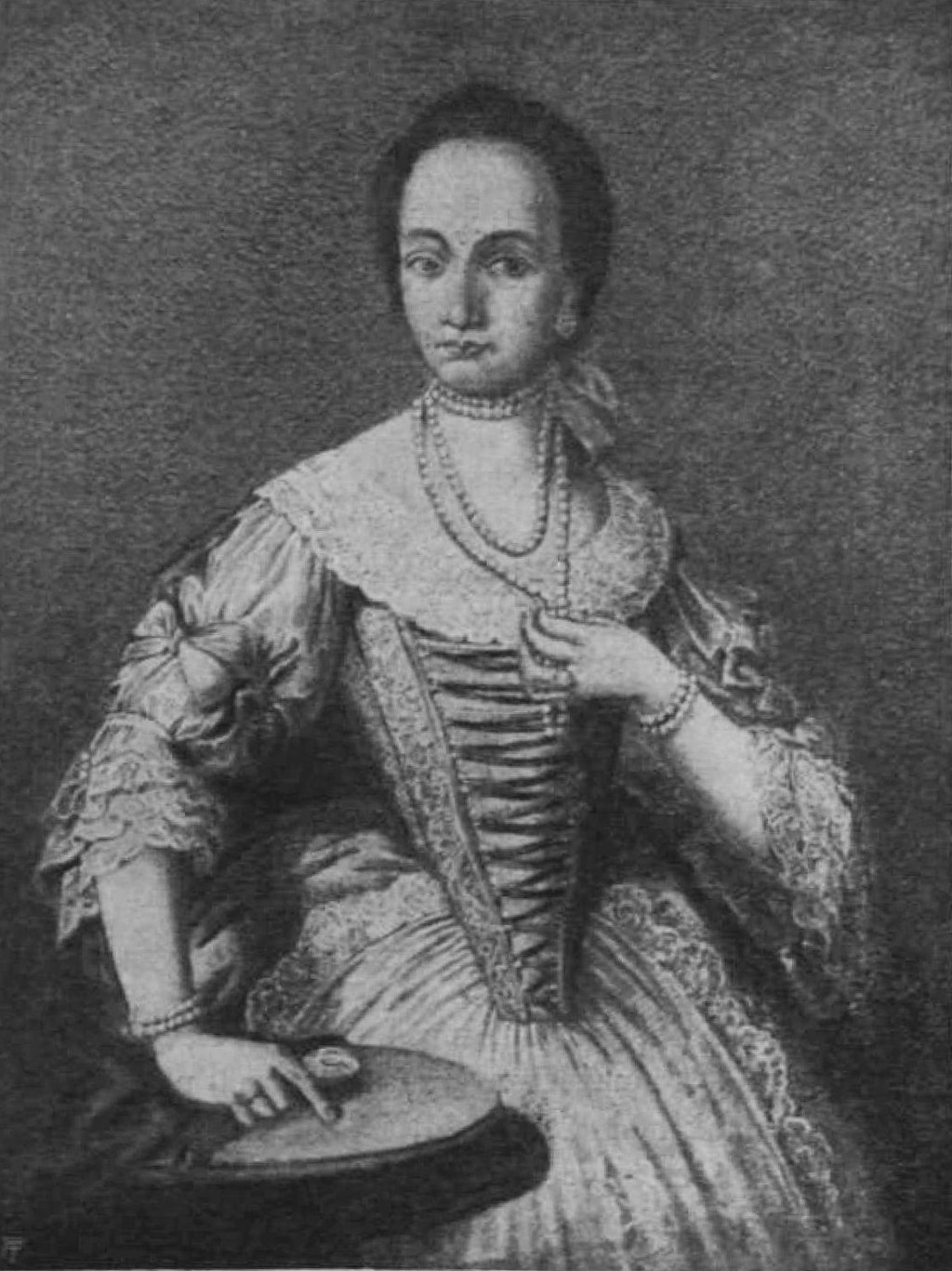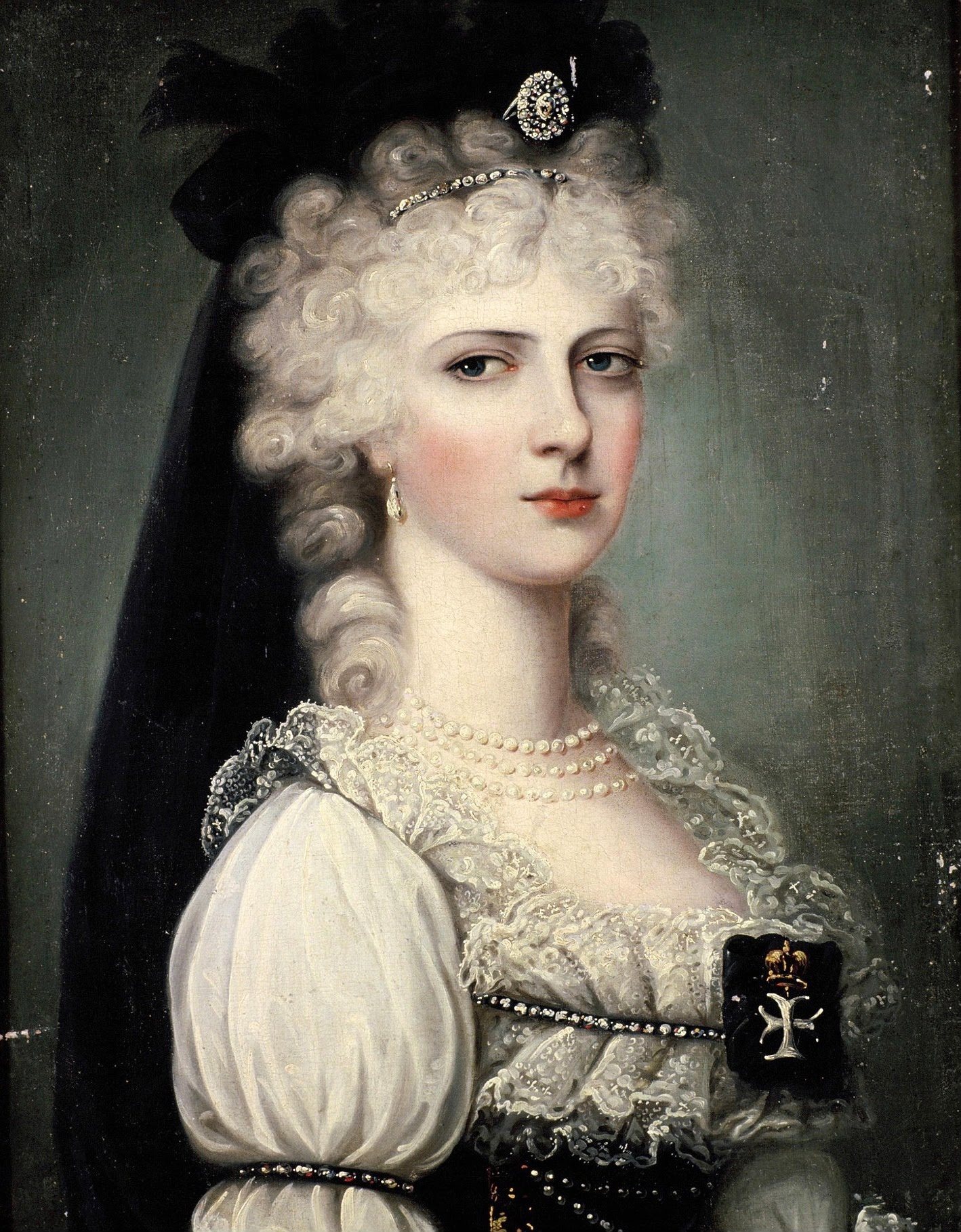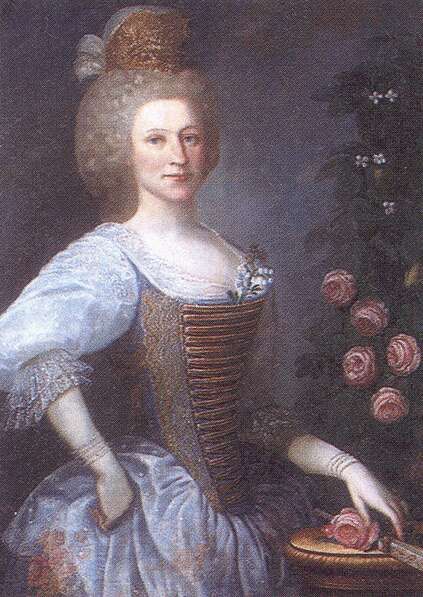Continuing on my image based research on Hungarian court dress inspired by the Rate the Dress post of Alexandra Pavlovna in Hungarian dress let’s look at portraits of women in formal Hungarian dress in the 19th and early 20th century to see how a general use of specific style elements became codified as díszmagyar: the formal court dress of Hungary under the Austro-Hungarian Empire.
(please note, this is intended as a general introduction to people not familiar with Austro-Hungarian history and politics, not a masters thesis on the subject! I’ve tried to be as accurate as possible without writing 17,000 words).
Hungarian Court Dress in the early 19th Century
Alexandra Pavlovna died in 1801, and the next portrait example I could find of a woman wearing Hungarian inspired clothes was actually on her successor: Princess Hermine of Anhalt-Bernburg-Schaumburg-Hoym.
Hermine (because I am not typing that lot again!) was only four years old when Alexandra Pavlovna dies, and only 18 when she married Archduke Joseph in 1815. She died only two years later after giving birth to fraternal twins, both of whom survived.
One of her few portraits shows her in Hungarian dress adapted for the extremely high waisted fashions of 1815, with the tiniest lacing effect on her brief bodice, and short puffed sleeves topped with ruffles. A double strand of pearls nods to their traditional use while keeping with the pared back classically inspired aesthetic.

Princess Hermine of Anhalt-Bernburg-Schaumburg-Hoym (1797-1817), second wife of Archduke Joseph Palatine of Hungary (1776-1847), ca 1815
Archduke Joseph married for the third and last time only two years after Hermine’s death, choosing her cousin Maria Dorothea. Maria’s confirmed take on Hungarian dress takes advantage of the lowered waists of the 1820s for a more defined faux lacing made of pearls. More pearls decorate the headpiece her veil falls from.
Interesingly both Hermine and Maria Dorothea have sleeves that match their bodice, rather than contrasting sleeves.

Maria Dorothea, Princess of Württemberg (1797-1855), third wife of Archduke Joseph, Palatine of Hungary, ca 1820
Another portrait which may also be Maria Dorothea shows a lacing effect dripping in precious stones, a headpiece and veil topped with a very sparkly tiara, and a return to chemise effect sleeves.

Portrait, possibly of Duchess Maria Dorothea of Württemberg (1797-1855), third wife of Archduke Joseph, Palatine of Hungary (1776-1847)
Other portraits of the 1820s show the different ways in which traditional Hungarian elements were modified to fit the fashions of the time, to create something that was both a la mode and a la nation.
Note the apron tied at the high waist here:

Portrait of a woman in Hungarian court dress, 1825, János Donát (1744–1830), Hungarian National Gallery
And the pointed waist and longer sleeves here, with multi-strand pearl necklaces.

Countess Julianna Festetics de Tolna (1753–1824), wife of Count Ferenc Széchényi de Sárvár and Felsővidék in Hungarian court gown, 1820s
Note the veils worn in the portraits above and almost all the following portraits. The earliest example I have found is in the two ca 1790 portraits of Walburga Csáky shown in the previous post. They appear in almost all portraits of women in formal Hungarian dress in the 19th century.
While this dress is missing the accessories like the veil, it does show many of the iconic elements, how they could be adapted to fit the fashions of a particular era, and the importance and role of such dresses as heirlooms that might be re-used across generations:

Hungarian dress First half of the 19th century. Silk, metal fiber fabric. Katalin Jezerniczky wore this to the coronation of Ferdinand V in 1835-7. It may have been made earlier than that date, and was also altered later in the 1840s.
After the death of the Archduke Josephine, the Emperor of Austria took over as King of Hungary. His wife, Maria Anna of Savoy, thus had herself painted as Queen of Hungary at least twice.

Maria Anna of Savoy (1803-1884), empress of Austria, queen of Hungary and Bohemia, wife of Ferdinand I of Austria (i.e of King Ferdinand V of Hungary).1835
Her outfits are iconically 1830s meets Hungarian style: the crown and headdress built up to support the vertical loops of hair fashionable in the 1830s, and the puffed sleeves made ever more elaborate. There is a distinct note of historicism in her attire.

Maria Anna of Sardinia 1803-84 by Caspar Jele, 1836
Hungarian Court Dress in the Mid 19th Century
In 1848 the new Austrian Emperor, Franz Joseph I revoked a set of laws which had guaranteed Hungarian’s more rights. The result? The failed Hungarian Revolution of 1848-9. While the Revolution failed, it saw a rise in Hungarian (specifically Magyar) nationalism, and thus a rise of portraits celebrating Hungarian identity.

Soma Orlai Petrich, Portrait of Róza Laborfalvi, 1840s
This one is particularly interesting, because it shows a Hungarian actress in the role of a 15th century Hungarian Queen. Her costume blends elements of Hungarian national dress that would be recognisable to a modern audience, and theatrical historicism.

Mrs. Schodel in the Role of Elisabeth Szilágyi (1852), Miklós Barabás
The subject of this one doesn’t just wear the dress: she’s also sporting the distinctive fur cloak of masculine Magyar dress.

Károly Telepy – E. Csorba Csilla- Jókai Mór és a háromlábú szörnyeteg 1858
There are even examples of wedding dresses in Hungarian style:

Mrs. György Bencsik, née Klaudia Ürményi de Ürmény (1833–1862), Hungarian noblewoman as a bride. Alajos Györgyi Giergl, 1859
Along with many examples of court style meets 1860s style:

Portrait of Baroness Kata Radák, 1860s, Miklós Barabás

Portrait of a noble Lady, Miklós Barabás, ca 1860

Hollósy Kornélia de Gertenyes (1827–1890), Hungarian opera singer, Mihály Kovács, ca 1860

Mihaily Munkácsy, Portrait of Reök Irén, 1864

Portrait of Reök Lujza by Munkácsy Mihály 1864
Empress Elizabeth’s Famous Hungarian Coronation Gown
After 18 years of Austrian absolute rule and military dictatorship in Hungary following the Revolution, a political compromise in 1867 created the Austro-Hungarian Empire, with two sovereign states (Austria and Hungary) ruled by one ruler – Franz Joseph.
Franz Joseph’s wife, is of course, the (in)famous Sisi, noted Hungariaphile (is that a word? Can that be a word?), who championed both more independence for Hungary, and wore what is probably the most iconic example of a Hungarian court dress for her coronation as Queen of Hungary.

Queen Elisabeth of Hungary and Bohemia, Empress of Austria (1837–1898), née Duchess in Bavaria in Hungarian coronation robes. Alexander von Wagner 1867
It’s got it all. Puffed sleeves, pearls, perky bows, a trailing veil, faux lacing, a train…

Portrait of Empress Elisabeth of Austria (1837-1898) 1860s

Empress Elisabeth of Austria in Hungarian Coronation Dress
It should be noted that while the fight for Hungarian recognition, and particularly Sisi’s part in it, is often romanticised as ‘brave little nation fighting for their rights against the big bad Austrian Empire’. The reality, as it so often is in politics, is more complicated. The real truth is more like ‘Elitist aristocracy of a brave little nation fighting for their own personal right to oppress their own people’.
Only 8% of the people in Hungary received suffrage with the 1867 Compromise. Austria suggested the Compromise because the Empire was on the brink of economic and political collapse after the Austro-Prussian war, and needed all the support they could get. The alliance was maintained only through gerrymandering, where pro-Austrian areas of Hungary were given a disproportionate amount of votes. For many (possibly most) Hungarians the Compromise was seen as a few elites selling out Hungary for personal gain.
Other examples of Empress Elizabeth’s in Hungarian Dress
Although Sisi’s 1867 Coronation gown is the most famous, it’s not the only example of her in Hungarian Court dress. Here’s are two portraits from shortly after marriage to Franz Joseph:

Franz Russ the Elder, Empress Elisabeth of Austria, 1855-60

Porträt der jungen Kaiserin Elisabeth, Lithographie von F. Wolf 1855
And then a posthumous portrait in mourning dress (for herself?).

Empress Elisabeth of Austria, Queen of Hungary and Bohemia in mourning, wearing traditional Hungarian court dress. The painting was made after the Queen’s death by Philip Alexius de László 1899
Hungarian Court Dress in the Late 19th & Early 20th Century
The Compromise of 1867 meant there were many opportunities for formal Hungarian inspired court attire in last quarter of the 19th century and first quarter of the 20th, before WWI ended the Empire.
Here’s a regal example where the Magyar jacket has become an ermine-trimmed court mantle:

Clotilde – Countess Palatine of Hungary (nee Princess of Saxe-Coburg Gotha Kohary) György Vastagh – Hungarian National Museum, Budapest 1880
And Sisi’s maid of honour in Hungarian court dress meets 1890s style, heavily influenced by Sisi’s coronation gown:

Ida Ferenczy de Vecseszék (1839–1928), maid of honour to Empress and Queen Elisabeth of Austria-Hungary in traditional Hungarian court gown 1896

Ida Ferenczy de Vecseszék (1839–1928), maid of honour to Empress and Queen Elisabeth of Austria-Hungary in traditional Hungarian court gown 1896
And here are a couple of examples of extant court dress, one more traditional, one showing a blend of eras, as it was worn and changed many times.

Hungarian Court dress at the National Museum

Court dress worn by multiple generations of of the Rhédey family, including to the 1916 coronation of Charles IV of Hungary. Silk & lampas silk, silver-lamella embroidery, gold-silver lampas ribbons and embroidered silk tulle. The dress has been altered and updated multiple times, the oldest parts of the dress are ca 1750. Owned by Dr. László Baján, shown at the Royal Palace of Gödöllő
Hungarian Folk Dress vs Hungarian Court Dress
Finally, let’s take a quick look at what ‘folk’ dress looked like, compared to formal court attire:
This one is very similar, just worn with a jacket, and here sleeves are not visible:

Vígan tántzoló Magyarok, J. Heinbucher, színezett rézmetszet, 1816
And these examples show the clear stylistic link between the two, and the way that folk costume became fossilized as a specific look, with only minor changes to reflect global fashions, while Court dress followed the trends much more closely:

Eger vidéki lakosok népviselete Hungarian Folk Costume 1830

Traditional clothes in Hont County , 1906


